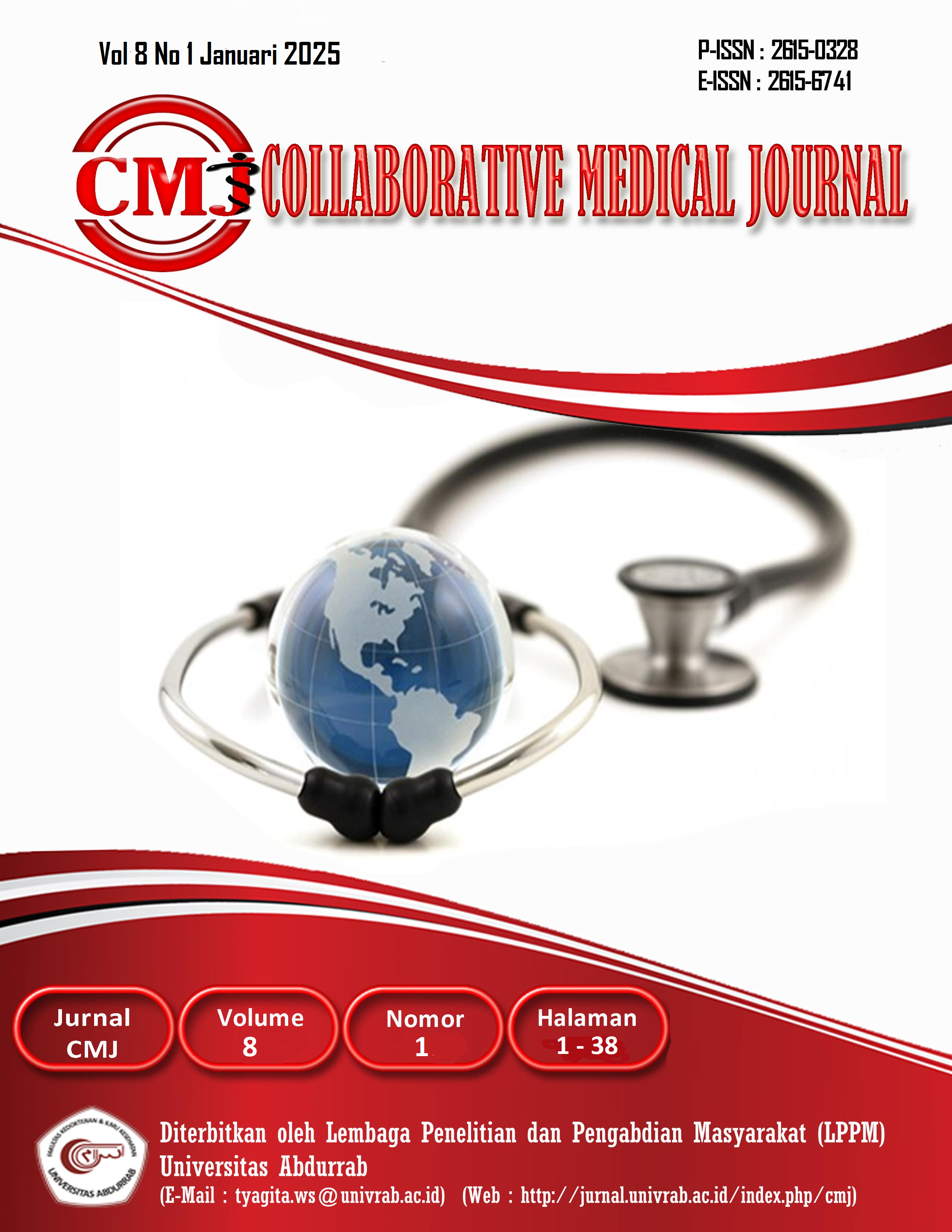PENGARUH PEMBERIAN JUS BONGGOL NANAS (ANANAS COMOSUS (L.) MERR) TERHADAP KADAR GLUKOSA TIKUS PUTIH JANTAN (RATTUS NORVEGICUS) YANG DIINDUKSI ALOKSAN
DOI:
https://doi.org/10.36341/cmj.v8i1.5810Keywords:
Alloxan, Antidiabetic, Diabetes MellitusAbstract
Diabetes Mellitus (DM) is a chronic metabolic disease characterized by increased blood glucose levels, which over time can cause damage to the heart, blood vessels, eyes, kidneys and nerves. Some plants that are known to lower blood glucose levels are pineapple, which contains flavonoids in the pineapple tuber. Flavonoid compounds are known to have strong antioxidant activity. By giving pineapple tuber juice, it is hoped that it can reduce blood glucose levels, one of which is by regenerating damaged pancreatic beta cells and stimulating pancreatic beta cells to produce insulin. The aim of this study was to determine the effect of giving pineapple tuber (Ananas comosus (L.) Merr) juice on the glucose levels of male white rats (Rattus norvegicus) induced by alloxan. This research method is experimental research that uses a "pretest - posttest with control group design". The samples used were 20 male Wistar rats. The mice were divided into 5 treatment groups consisting of a normal group, a negative control group which was induced by alloxan, a positive group which was given metformin, and a group which was given 100% and 50% concentrations of pineapple tuber juice. The results of this study through One Way ANOVA analysis showed that giving pineapple tuber juice with concentrations of 100% and 50% had a significant blood glucose reduction effect of p<0.05 in the negative control group. There was no significant difference p>0.05 between 100% and 50% concentrations of the positive control given metformin. The greatest decrease in blood sugar occurred at a concentration of 100%. The conclusion of this research is that pineapple tuber juice (Ananas comosus L. Merr) can reduce blood glucose levels in rats induced by alloxan with the largest reduction at a concentration of 100%.
Downloads
Downloads
Published
Issue
Section
License
1. Copyright of all journal manuscripts is held by the Collaborative Medical Journal (CMJ)
2. Formal legal provisions to access digital articles of electronic journal are subject to the provision of the Creative Commons Attribution-ShareAlike license (CC BY-NC-SA), which means that Collaborative Medical Journal (CMJ) is rightful to keep, transfer media/format, manage in the form of databases, maintain, and publish articles.
3. Published manuscripts both printed and electronic are open access for educational, research, and library purposes. Additionally, the editorial board is not responsible for any violations of copyright law.
licensed under a Creative Commons Attribution-ShareAlike 4.0 International License.





